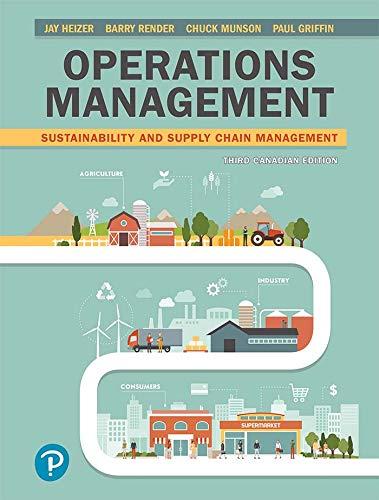Question
URGENT PLEASE HELP: Boko is a Chinese company originally involved in designing and making kitchen units. It switched to producing fridge freezers after realising the
URGENT PLEASE HELP:
Boko is a Chinese company originally involved in designing and making kitchen units. It switched to producing fridge freezers after realising the potential of the growing Chinese economy to enable workers to afford these appliances, which had been out of their price range previously. Foreign competitors operating in China had not yet sensed the potential of the Chinese economy or appreciated the changing environment that would give rise to increased spending power of consumers.
The company initially sourced heat exchange condensers, a key component in fridges and freezers, from Japan. It developed a significant market share in fridge-freezers in China, under its own brand name. At the same time, it started to manufacture on behalf of companies in other countries, based on its low prices. Although it had no technological competitive advantage at the time, it had access to cheap labour and facilities, thanks to government policies, which enabled it to compete effectively on cost. It also obtained agreement from foreign customers to use any excess assembly line capacity to serve the domestic market, once the foreign customers orders had been filled in full. This inflow of foreign trade enabled it to further increase production and it started running its assembly lines on a 7*24 basis, gaining economies of scale that allowed it to lower costs and prices further, thereby overcoming all domestic competition.
Its success meant that it needed more and more heat exchanges and it started to run into supply problems as its Japanese suppliers began to limit supply, in order to protect their other customers and because they started to feel threatened by Bokos success. Boko decided to invest significantly in R&D, designing its own heat exchanges and, after a couple of years, they perfected the design and integration into their own models for the domestic market.
This capability enabled them to start designing products for some international customers, as well as manufacturing to design for others. The Boko brand became well known, even outside China, especially in other Asian countries, and pressure mounted for it to start exporting and selling under its own brand name, which it began doing in nearby markets, later extending to Europe and the USA, though in a small way.
Once competition had been overcome using a low-cost strategy, Boko started to differentiate its product range, adding new features such as auto-defrosting, at higher prices. This also increased costs as the assembly lines had been set up for high volume, low variety processing.
It was now shipping 16 million units annually, of which 5 million were for the domestic market, a 10-fold increase in a 20 year period. This gave it a 60% share of the domestic market and over 40% of the overall international market, leading to total revenues of 1.4 billion and profit of over 60 million.
Boko was faced with deciding how to handle possible conflict between its own brand business (OBM: original brand manufacturer) and the OEM (Original Equipment Manufacturer: manufacturing to other companies designs) and ODM (Original Design Manufacturer: designing and manufacturing for other companies to sell under those companies brands) businesses that had fuelled its growth. Was there a danger that its OEM and ODM customers would take their business elsewhere?
Also, while operating as an OEM, or even as an ODM when also designing product for customers, those customers bore the commercial risk of selling the output at a profit. Boko was paid for its design and production work based on fixed price contracts. When moving more into own-brand business, Boko bore the full commercial risk of selling its output profitably. Furthermore, in promoting own-brand sales in foreign markets, it had to consider how after-sales servicing would be handled. It had no established third party service partners and would have to become familiar with that aspect of the business in its various markets, with different regulatory environments and customer expectations.
Consider the foregoing and answer the following questions:
- Rank the importance of the performance objectives of cost, quality, flexibility, dependability and speed at the initial stages of the companys development and how these have changed since.
- What strategic role have technology and innovation played in the companys operations.
- What is Bokos competitive strategy today? What is its operations strategy and how does this support the competitive strategy?
- What are the key differences in OEM/ODM versus OBM in terms of design, manufacture, sales and customer service?
Step by Step Solution
There are 3 Steps involved in it
Step: 1

Get Instant Access to Expert-Tailored Solutions
See step-by-step solutions with expert insights and AI powered tools for academic success
Step: 2

Step: 3

Ace Your Homework with AI
Get the answers you need in no time with our AI-driven, step-by-step assistance
Get Started


